Waterborne Diseases
Waterborne diseases pose significant health risks to populations worldwide, particularly in regions with inadequate access to clean water and sanitation infrastructure. These diseases are caused by pathogenic microorganisms such as bacteria, viruses, and parasites that contaminate water sources, including drinking water, recreational water bodies, and wastewater. Common waterborne illnesses include cholera, typhoid fever, dysentery, and cryptosporidiosis, with symptoms ranging from mild gastrointestinal discomfort to severe dehydration and death. Poor sanitation practices, inadequate water treatment facilities, and environmental pollution contribute to the transmission of waterborne pathogens, exacerbating the burden of disease in vulnerable communities. Effective prevention and control strategies for waterborne diseases entail improving water quality through proper treatment and disinfection, promoting hygiene and sanitation practices, and implementing robust surveillance and response systems to detect and mitigate outbreaks promptly.

Francis J Castellino
University of Notre Dame, United States
Ranjan Ramasamy
ID-FISH Technology, United States
Saurabh Chattopadhyay
University of Kentucky College of Medicine, United States
Rico Leonardo Lizbinski
Northern Light Health, United States
Sasha Leibholz
New York Presbyterian Columbia/Cornell, United States
Lauren Gruffi
New York Presbyterian Columbia/Cornell, United States



Title : Pathogen-derived noncanonical epitopes: Are they valuable targets for novel vaccinations and shall we be concerned about autoimmune responses?
Michele Mishto, Francis Crick Institute, United Kingdom
Title : Bioterrorism through the ages: Historical perspective, emerging threats, and medical countermeasures
Claudia Ferreira, Sorbonne University, France
Title : Changing population immunity to COVID-19 in the context of infection, vaccination, and emerging SARS-CoV-2 variants
Ranjan Ramasamy, ID-FISH Technology, United States
Title : Extensively drug-resistant bacterial infections: Confronting a global crisis with urgent solutions in prevention, surveillance, and treatment
Yazdan Mirzanejad, University of British Columbia, Canada
Title : Measles vaccination coverage indicators in 2023 and advance towards measles elimination and eradication by 2030
Pedro Plans Rubio, College of Physicians of Barcelona, Spain
Title : Severe influenza and other related respiratory infection cases during Omicron era in Japan
Masafumi Seki, Saitama Medical University International Medical Center, Japan